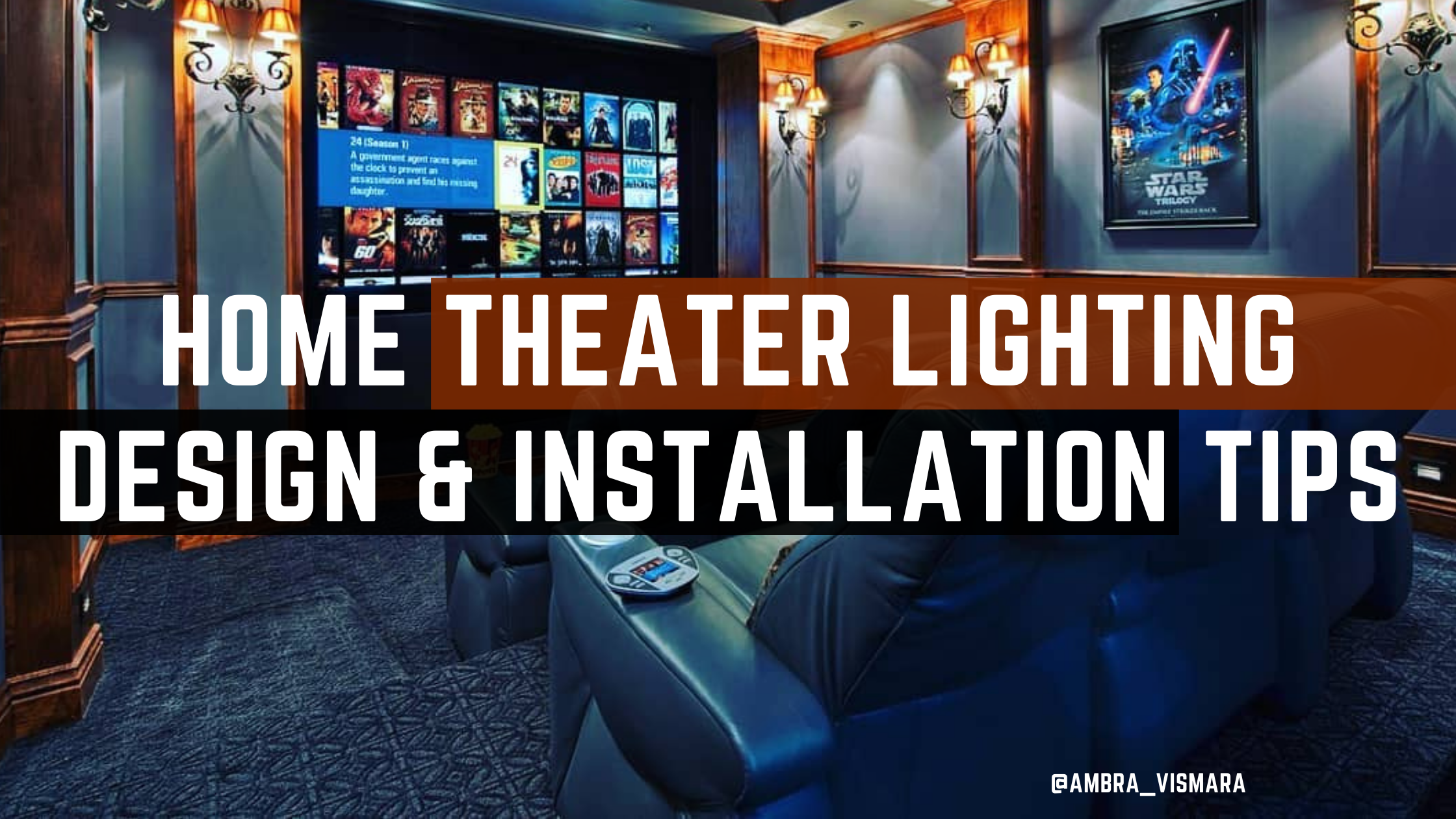We Share Comprehensive Home Theater Design Advice Every Day!
HT_Mart Featured #1: Stellar Sky Systems/Ht_Mart
HT_Mart Featured #2 : Lightbulbs.com
HT_Mart Featured #3: Smart Home Solver
Banner Image Instagram Feature: @realtor_brenda
Many people assume that the best TV watching occurs in total darkness. After all, commercial theater operators run movies in the dark, right? Not usually. Often theaters fully dim over-head lighting, while operating significantly dimmed accent lights along the walls, the center-aisle floor and on end seats.
According to Joseph Rey-Barreau, a lighting expert and associate professor at the University of Kentucky's School of Interior Design, the lighting design used by commercial theater operators is a good starting point for consumers who want to create a cinema experience in the comforts of home.
Home theater is all about creating a dedicated viewing experience, so to limit distractions ambient lighting is your best choice. Hanging or suspended fixtures and lamp lights can reflect on the screen or cause uneven lighting of a projected image. It is also important to make the lights dimmable, and remote controlled if possible.
The following are preferred lighting options for a home theater:
- Recessed lighting
- Wall sconces
- Ambient lighting
- Rope Lighting
- LED or fiber optic lighting/Star Panels

Again, remember that with all lighting choices, make sure that any mounted fixtures can be dimmed and are remote controlled and any table lamps should have opaque shades and easy-to-find pull chains or switches
"At the theater, when you're only focused on the screen, your eyes will adapt to that particular level of light," Rey-Barreau says. "When you're watching TV at home, you're not usually that focused. Your eyes will move around and you'll probably get up once in a while. If you don't have at least a little bit of light, your pupils will constantly dilate up and down to adjust to a multitude of light levels. It can be disorienting."

Lighting in a home theater should be subtle and help create the theater atmosphere—but it should also be capable of fully illuminating the room for cleaning and other activities.
Home Theater Lighting Solutions:
Sconces: Sconces are light fixtures that are usually attached to a wall, and which are designed to direct the light upwards. Available in various shapes (square, circular, cone, even ceramic sconces) customization, and themes, and generally installed ¾ of the distance up the wall, sconces make for subdued, non-intrusive lighting, perfect for the home theater experience.
Quick Tip: Looking to highlight a classic movie poster you’ve just put up on the wall, without ruining the ambience of your home theater? Use home theater sconces to achieve the desired spotlight effect, and evoke a veritable film junkie mood.
Ambient Lighting: As one of the most affordable home theater lighting options, three-way bulbs give you the ability to adjust the levels of light in your home theater. There are two filaments in each of these bulbs, one with a lower wattage than the other, which allow you to choose between three distinct levels of light. Planning on using your normal light fixtures? Just install a dimmer switch. Of course, for energy-saving home theater lighting performance, make the switch from incandescent light bulbs to three-way CFL bulbs. Or if you are looking for something unique and different, check out this awesome stained glass light-bulb from lightbulbs.com
Fiber Optic Lighting: Fiber optic lights like our (Stellar Sky Systems star panels available at htmart.com!) in your home theater keep the space aglow, and can even be decked out in a way that looks like a galaxy of stars, or a pleasant, ambient night sky. The best part? They’re low-wattage, low-amperage, and they never burn out. (You need only to change the bulb every 10,000 hours or so.)
Rope Lights: Rope lights are great for stadium-seating home theaters, but that doesn’t mean you just line the ropes out along the rows. Think creatively. Run the rope lighting around the perimeter of your home theater, or use it as a main lighting and install it overhead.
Finally, whichever home theater lighting option you choose, you might want to consider automating your home theater lighting system and add custom lighting controls. It saves you the inconvenience of having to make manual lighting adjustments – as you put the DVD in, read the synopsis, turn off the subtitles, leave the home theater room to answer a phone call – and it also enhances the value of your home theater!
If you're interested in automating your home theater lighting option, check out this great video by Smart Home Solver covering 20 Smart Lighting ideas to get your smart home theater lighting jump started toward awesomeness!
Want to read the entire Ht_Mart How To Build Your Own Home Theater Guidebook?
Hit the link above and don't forget to follow us on Instagram, Facebook, Youtube, & Pinterest for anything & everything to do with Home Theater design and installation!


